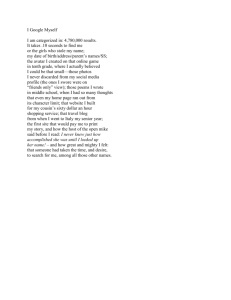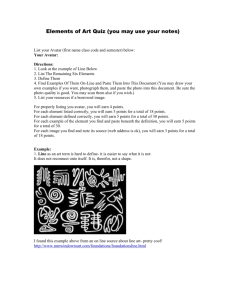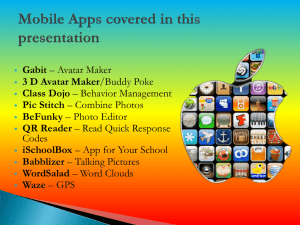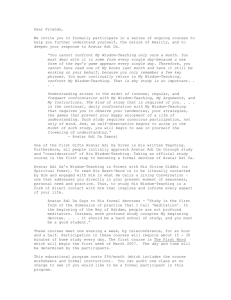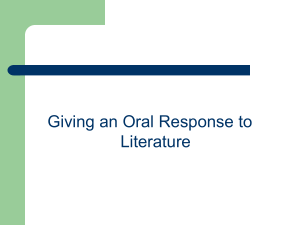Fact Sheet - University Programs
advertisement
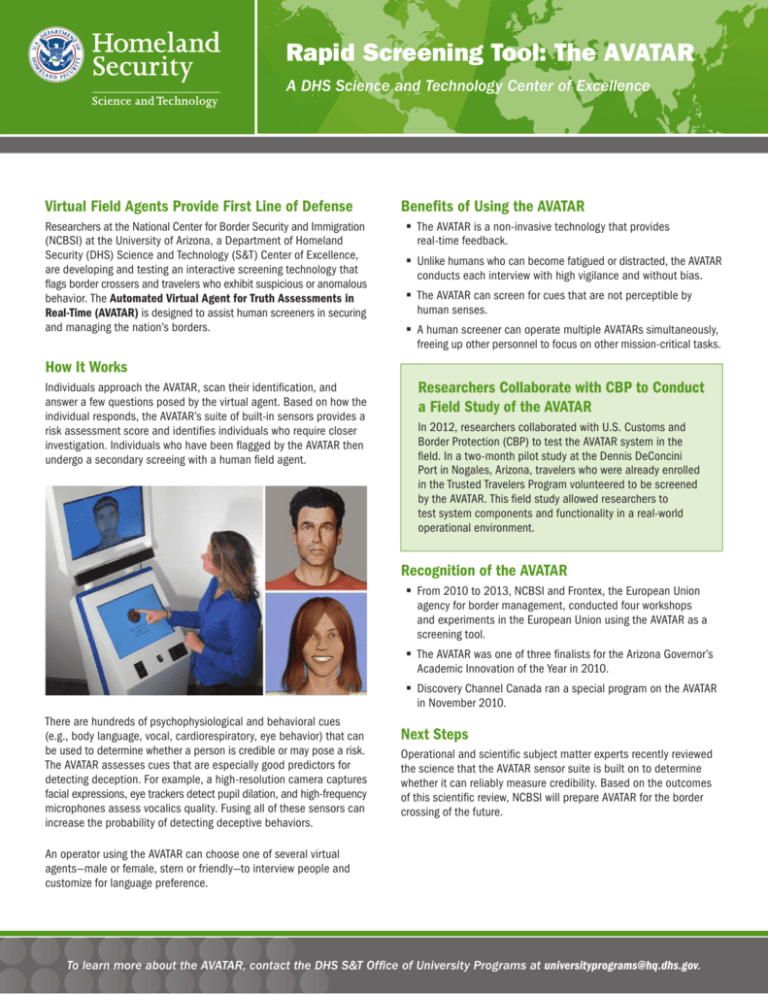
Rapid Screening Tool: The AVATAR A DHS Science and Technology Center of Excellence Virtual Field Agents Provide First Line of Defense Researchers at the National Center for Border Security and Immigration (NCBSI) at the University of Arizona, a Department of Homeland Security (DHS) Science and Technology (S&T) Center of Excellence, are developing and testing an interactive screening technology that flags border crossers and travelers who exhibit suspicious or anomalous behavior. The Automated Virtual Agent for Truth Assessments in Real-Time (AVATAR) is designed to assist human screeners in securing and managing the nation’s borders. Benefits of Using the AVATAR The AVATAR is a non-invasive technology that provides real-time feedback. Unlike humans who can become fatigued or distracted, the AVATAR conducts each interview with high vigilance and without bias. The AVATAR can screen for cues that are not perceptible by human senses. A human screener can operate multiple AVATARs simultaneously, freeing up other personnel to focus on other mission-critical tasks. How It Works Individuals approach the AVATAR, scan their identification, and answer a few questions posed by the virtual agent. Based on how the individual responds, the AVATAR’s suite of built-in sensors provides a risk assessment score and identifies individuals who require closer investigation. Individuals who have been flagged by the AVATAR then undergo a secondary screeing with a human field agent. Researchers Collaborate with CBP to Conduct a Field Study of the AVATAR In 2012, researchers collaborated with U.S. Customs and Border Protection (CBP) to test the AVATAR system in the field. In a two-month pilot study at the Dennis DeConcini Port in Nogales, Arizona, travelers who were already enrolled in the Trusted Travelers Program volunteered to be screened by the AVATAR. This field study allowed researchers to test system components and functionality in a real-world operational environment. Recognition of the AVATAR From 2010 to 2013, NCBSI and Frontex, the European Union agency for border management, conducted four workshops and experiments in the European Union using the AVATAR as a screening tool. The AVATAR was one of three finalists for the Arizona Governor’s Academic Innovation of the Year in 2010. Discovery Channel Canada ran a special program on the AVATAR in November 2010. There are hundreds of psychophysiological and behavioral cues (e.g., body language, vocal, cardiorespiratory, eye behavior) that can be used to determine whether a person is credible or may pose a risk. The AVATAR assesses cues that are especially good predictors for detecting deception. For example, a high-resolution camera captures facial expressions, eye trackers detect pupil dilation, and high-frequency microphones assess vocalics quality. Fusing all of these sensors can increase the probability of detecting deceptive behaviors. Next Steps Operational and scientific subject matter experts recently reviewed the science that the AVATAR sensor suite is built on to determine whether it can reliably measure credibility. Based on the outcomes of this scientific review, NCBSI will prepare AVATAR for the border crossing of the future. An operator using the AVATAR can choose one of several virtual agents—male or female, stern or friendly—to interview people and customize for language preference. To learn more about the AVATAR, contact the DHS S&T Office of University Programs at universityprograms@hq.dhs.gov.

